*Positioning
Brand strategy in practice: examples and practical models
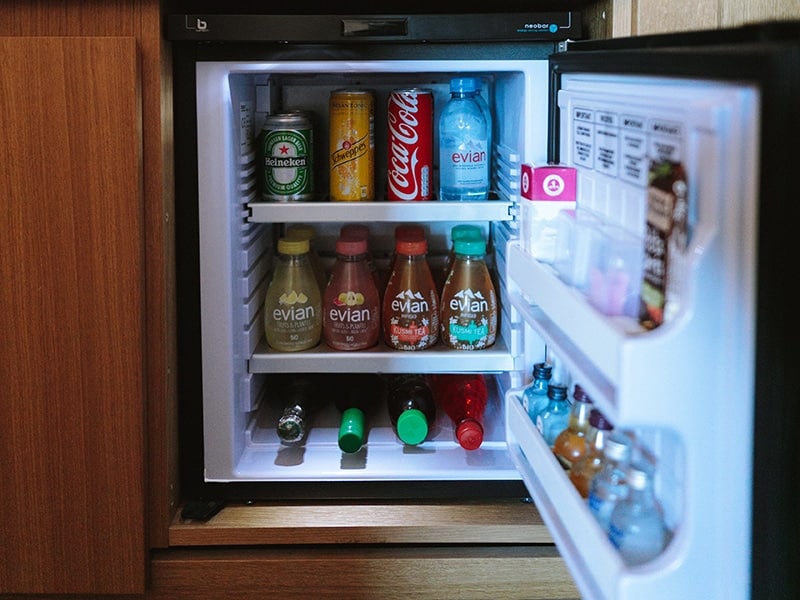
What does a good brand strategy deliver? Like many marketing terms, brand strategy has a life of its own. For some, it is the same as positioning, while for others, it is much more abstract. In this article, we share the definition, explain what brand strategy means, and in addition to two brand strategy models, we also provide interesting examples of brand strategy in B2B and consumer marketing.
After reading this article, you will be able to take your first steps towards a successful brand strategy.
What is brand strategy?

How much shelf space does one company take up here?
How much shelf space does one company take up here? Brand strategy is the way in which a brand (or brands) is used to achieve (business) objectives. For example, the brand strategy may outline the target audience, their needs, how the brand relates to the business strategy or which aspects of it should be included, how success is determined, and what the brand’s goal is.
Unilever’s brand strategy, for example, is to take a leading position in fairly diverse categories with unique, stand-alone brands. That is in contrast to Coca-Cola’s brand strategy; the soft drink manufacturer promotes one brand name in one category with a variety of variants. However, the Coca-Cola conglomerate has many other brands in its portfolio.
Brand strategy in practice
For many companies, the company name and the product or brand name are the same. Take, for example, a law firm. This firm probably has a name, and this name is the brand that needs to be positioned in the market. The brand strategy is obvious: establish one clearly recognizable brand in the market to improve business results. This is the case for many companies, and it is not very useful to spend too much time on the brand strategy.
It becomes interesting when the same law firm discovers that a certain activity has a lot of potential but that the target audience does not have sufficient connection to the existing brand. What do you do then? This is a problem where brand strategy comes into play: how to tackle this challenge?
Preferably, call in the help of an expert right away? Merkelijkheid has been helping companies with a wide range of brand strategy issues for more than 10 years. From setting up a central brand (portfolio) for a buy & build strategy to creating a new brand or relaunching an established name. Their knowledge and experience enable them to quickly make brand strides. Contact us, and wewill be happy to tell you about our approach.
Brand strategy definition
The definition of brand strategy is:
The long-term plan to achieve specific, predetermined goals with a brand or brands.
Brand strategy meaning
This is a broad definition, but it is intentional as strategy should be broad. It is the way (how) we are going to achieve our goal (what), and there should be enough room for a unique approach. With a clear brand strategy and its implementation in all aspects of the organization, companies such as Unilever and P&G have been the undisputed market leaders for years.
However, because of this breadth, brand strategy (how we achieve our goal) is sometimes confused with positioning (how we differentiate ourselves). This makes it difficult to choose a good positioning or prevents the necessary attention from being paid to the brand strategy. Dove and Magnum differentiate themselves in completely different ways, but still within the framework of the Unilever brand strategy. Unilever’s brand strategy is called the 5C Framework (source). In an ideal case, the brand strategy is therefore an important part of the strategic framework for positioning.
Determining brand strategy
How do you start determining your brand strategy? In practice, there is always a reason to look at the brand strategy. Exploring that reason and the various causes or factors can often be a big step in the right direction. But sometimes it is better to map out the situation using a model and explore the possibilities.
Brand strategy model: Ansoff matrix
One model that provides direction in the field of brand strategy is the Ansoff matrix. This model, developed in 1957, weighs the options between new or existing products in new or existing markets and assigns a strategy to each quadrant. A new product in an existing market means product development, a new product in a new market means diversification. How do you translate this into a brand strategy?
The Ansoff matrix has been transformed into a matrix that tells you which brand strategy best fits your approach for each quadrant:
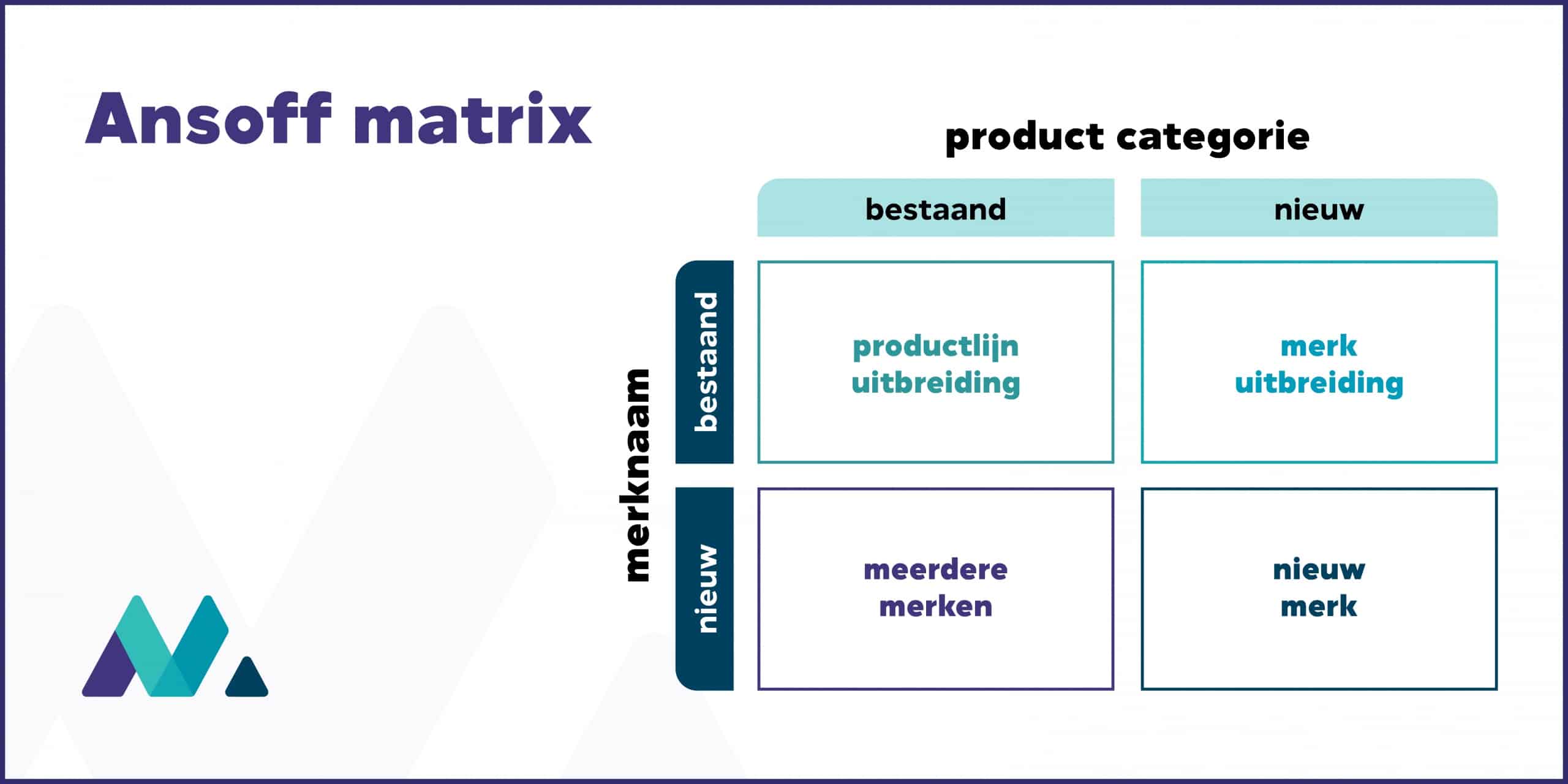
Line Extension (Product line expansion)
With this strategy, an existing brand name is used to gain a larger market share in the same category. In the case of products, a new size, shape, or flavor is launched, while a service is created around a different proposition. A recognizable example comes from Coca-Cola Zero, which was launched as “Diet Coke for men.”
Brand Extension (Brand expansion)
If your existing brand name enters the market in a new category, we speak of brand extension. It is important that there is a logical connection between the existing and the new category. This prevents the credibility of the brand from being compromised in both categories.
This happens more often than people think. For example, in the clothing market, almost every clothing brand eventually releases a perfume under the same brand name. But this also occurs frequently in B2B, for instance, our client Apex Dynamics expanded its range with rack and pinions alongside their existing offering of low-backlash gearboxes. The market remained that of the power transmission technology, but the category was new for the brand.
Multibrand (Multiple brands)

What is the right brand strategy to get more shelf space in the supermarket?
What is the right brand strategy to get more shelf space in the supermarket? An approach with multiple brands in the same category is called a multibrand strategy in English. In this approach, one organization or manufacturer is active in the same category or market with multiple brands. In consumer marketing, this is very common, for example, a manufacturer has multiple brands of diapers, cornflakes, or car brands.
In B2B, this is significantly less common. An example is when an industrial manufacturer introduces another brand to the market to group its more economical or high-end products under. AkzoNobel, for example, has various paint brands with which it tries to reach different market segments, one brand focused on B2B and the other on consumers.
New brand
If a company enters a new market with a new product, it is often wise to launch a completely new brand. This is often the strategy of the startup that does not have an existing brand to leverage or a company that enters a completely unrelated market.
Payment processor Adyen is no longer a startup with around 700 million euros in revenue and 1,750 employees, but its name means “to start again.” The brand has grown rapidly since its founding in 2006 and has built a sympathetic brand around the idea of easy (online) payments without all the hassle and baggage of traditional banks. The fact that they operate on a technology developed by banks makes it all the more interesting.
Brand strategy: brand portfolio
Through acquisitions or as a result of the pursued strategy, companies sometimes find themselves in a situation where they have built up a whole portfolio of brands. In many cases, this has gradually arisen and the company is not set up to assess the portfolio as a whole. This simply does not happen, while there are certainly opportunities.
In the 1950s, P&G analyzed its portfolio as a whole for the first time. It turned out that the company had many brands that were underperforming due to the traditional hierarchy. Employees preferred to spend time on successful brands, and as a result, the status of these brands never improved. When P&G decided to organize its organization around individual brands, performance immediately improved.
One of the ways to look at a brand portfolio is called brand architecture; how is your portfolio of brands built up.
Types of brand strategy: brand architecture
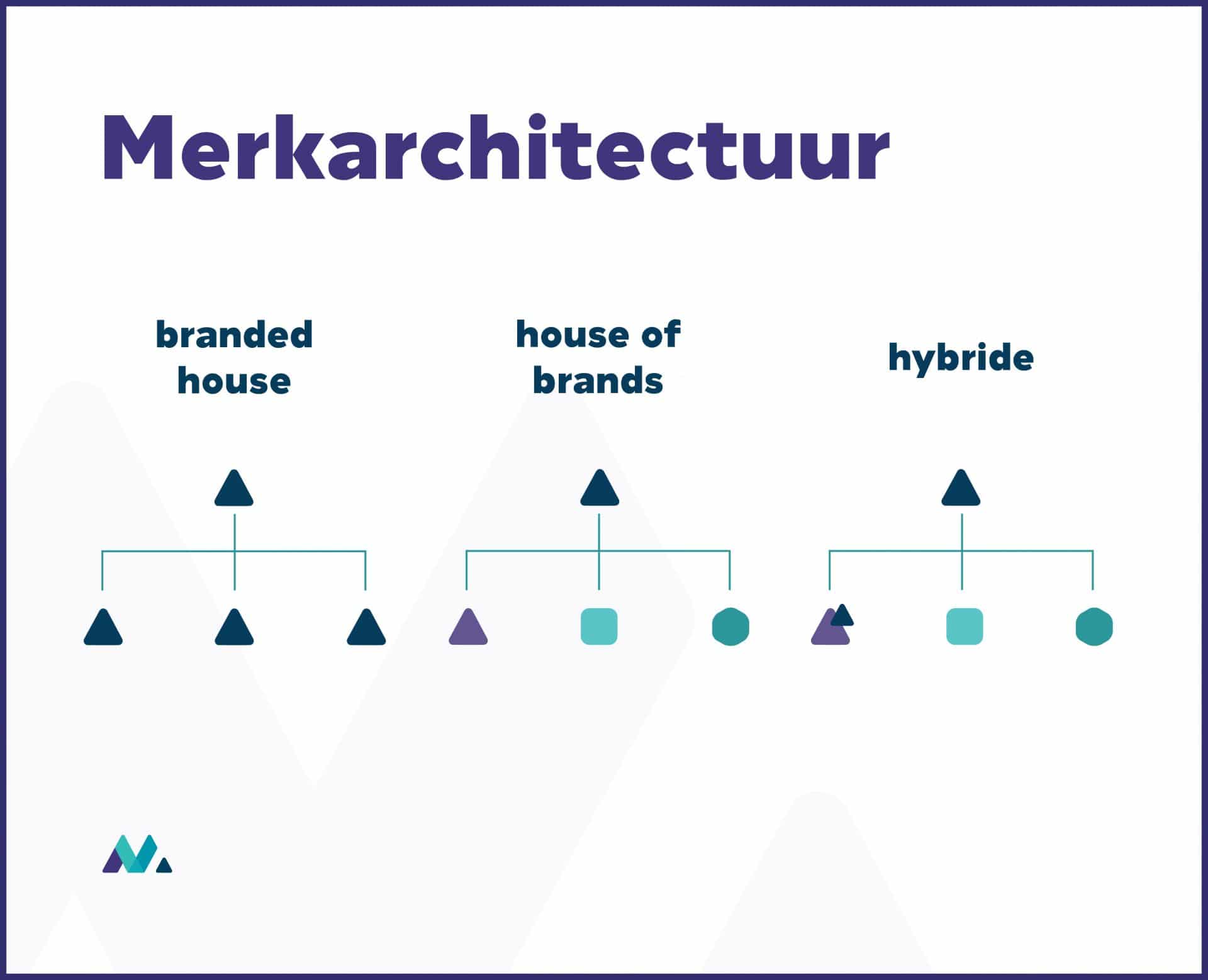
There are roughly 3 ways to look at your brand or brands:
- Monolithic
- Hybrid
- Freestanding
Monolithic Brand Architecture – Branded House

There are many different names for this brand architecture. In English, it is usually called Branded House, while in Dutch it is also called an umbrella brand or family brand. In this structure, one brand is used to designate all products, activities and services. Consumer brands such as Samsung, Heinz, and McDonald’s are good examples of this, but Aalberts, IBM, and Siemens also use this architecture.
These brands use all their marketing power to load and promote one brand in the market, and that is also the biggest strength of this tactic: no spreading of resources. Every investment contributes to the brand’s awareness, loyalty, and trust.
Hybrid Brand Architecture
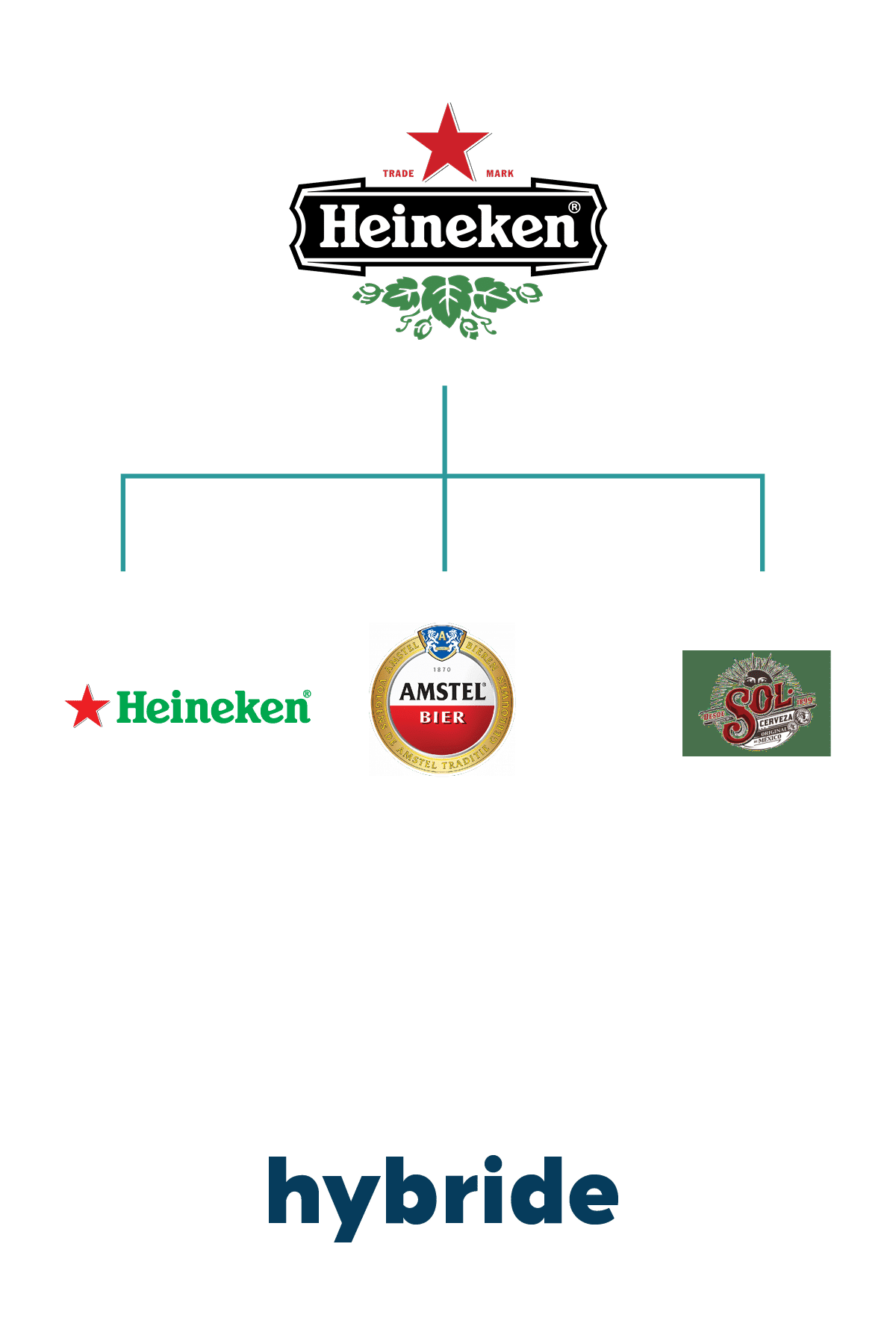
Another globally known brand, Coca-Cola, chooses the hybrid brand architecture. The Coca-Cola brand name appears on all varieties and flavors of Cola, but the company has stand-alone brands for other categories such as Fanta, Sprite, and sports drink Aquarius. The Volkswagen Group uses the same tactic, with the Volkswagen car brand having the same name as the parent company but having a wide variety of sister brands.
Resources are divided, but the parent brand is still used to a significant extent as a lever for brand awareness.
This tactic is also often the result of an acquisition strategy, where a company acquires other market players and wants to retain and monetize the goodwill of the acquired brands. The original monolithic brand architecture remains in place, but a number of brands are kept freestanding.
Freestanding brand architecture – House of Brands
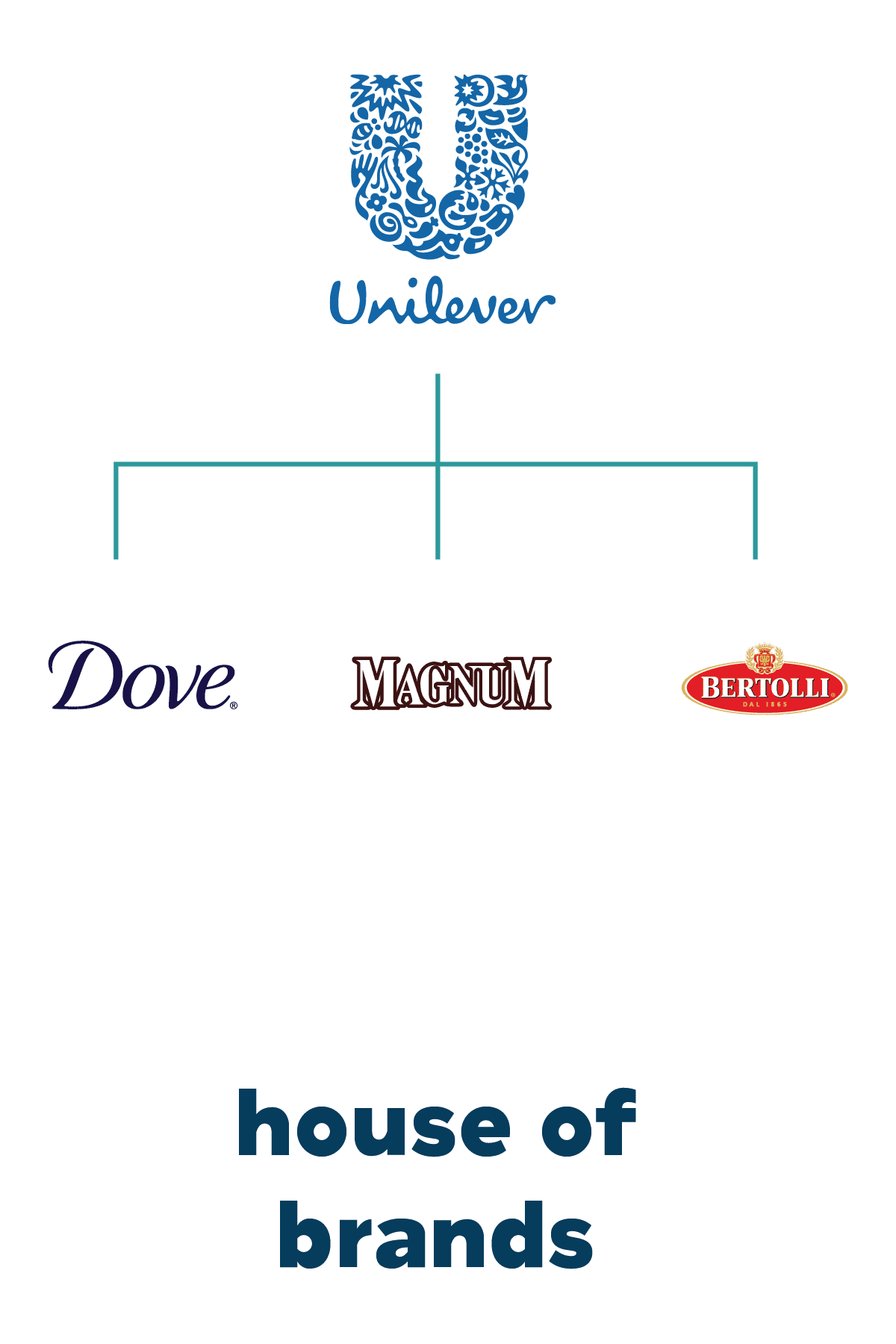 The English name for this tactic is House of Brands, a (often large) diversity of brands under the relatively unknown brand name of the parent company. P&G and Unilever, mentioned earlier in this article, are companies that literally invented and successfully implemented this tactic for years.
The English name for this tactic is House of Brands, a (often large) diversity of brands under the relatively unknown brand name of the parent company. P&G and Unilever, mentioned earlier in this article, are companies that literally invented and successfully implemented this tactic for years.
The big advantage of this tactic is that it makes it possible to establish leading brands in a wide variety of categories. It is harder to make the best fridge and the best beer with just one brand. Or to position a paint brand so that both the consumer and the professional choose it. That is why AKZO Nobel also opts for a freestanding brand architecture.
This division into 3 types of brand architecture may be a bit simplistic for some. Although it is sufficient for the vast majority of clients, it makes sense in some cases to look a bit more deeply. There are multiple degrees possible of the possibilities outlined here. Read more about brand architecture.
Het logo is GE’s ‘mark of quality’
Example brand strategy: GE
Industrial conglomerate GE (General Electric) is one of the most well-known industrial companies in the world. Founded in 1892, the brand has always been closely associated with different aspects of life and has always been one of the largest American companies. Nowadays, the brand has lost some of its shine, is no longer part of the Dow Jones Industrial Index, dropped out of the Fortune 500 top 10 to number 21, and has sold many of its businesses. The logo is GE’s ‘mark of quality’.

‘Building a world that works’ is the new slogan after ‘Imagination at work’ (GE website)
Currently, the company focuses on activities in energy, healthcare, capital, aviation, additive, and digital, and with this, according to Lawrence Culp, Jr., “.. return GE to a position of strength..”

Very diverse business units all carry the same GE brand, several of the above-mentioned brands have now been divested.
The brand strategy of GE is a significant part of the reason why the company has survived. GE is the perfect example of a successful monolithic brand/Branded House, where all activities and divisions have always carried the GE brand, and the conglomerate has built on expanding that brand year after year. In 2020, the Interbrand ranking placed GE at 29th place with a brand value of nearly $18 billion, which is 15.4% of the total value of the company!

Hospital, industry, and aviation side by side under one brand, GE is a prime example of a Branded House. The above image is taken from their Instagram.
Brand Strategy Model: Unilever’s Brand Key Model
The most well-known brand strategy model is Unilever’s Brand Key Model. Developed to steer all brands worldwide in the same way, this model helps to present the basics of each brand on a single A4 page.
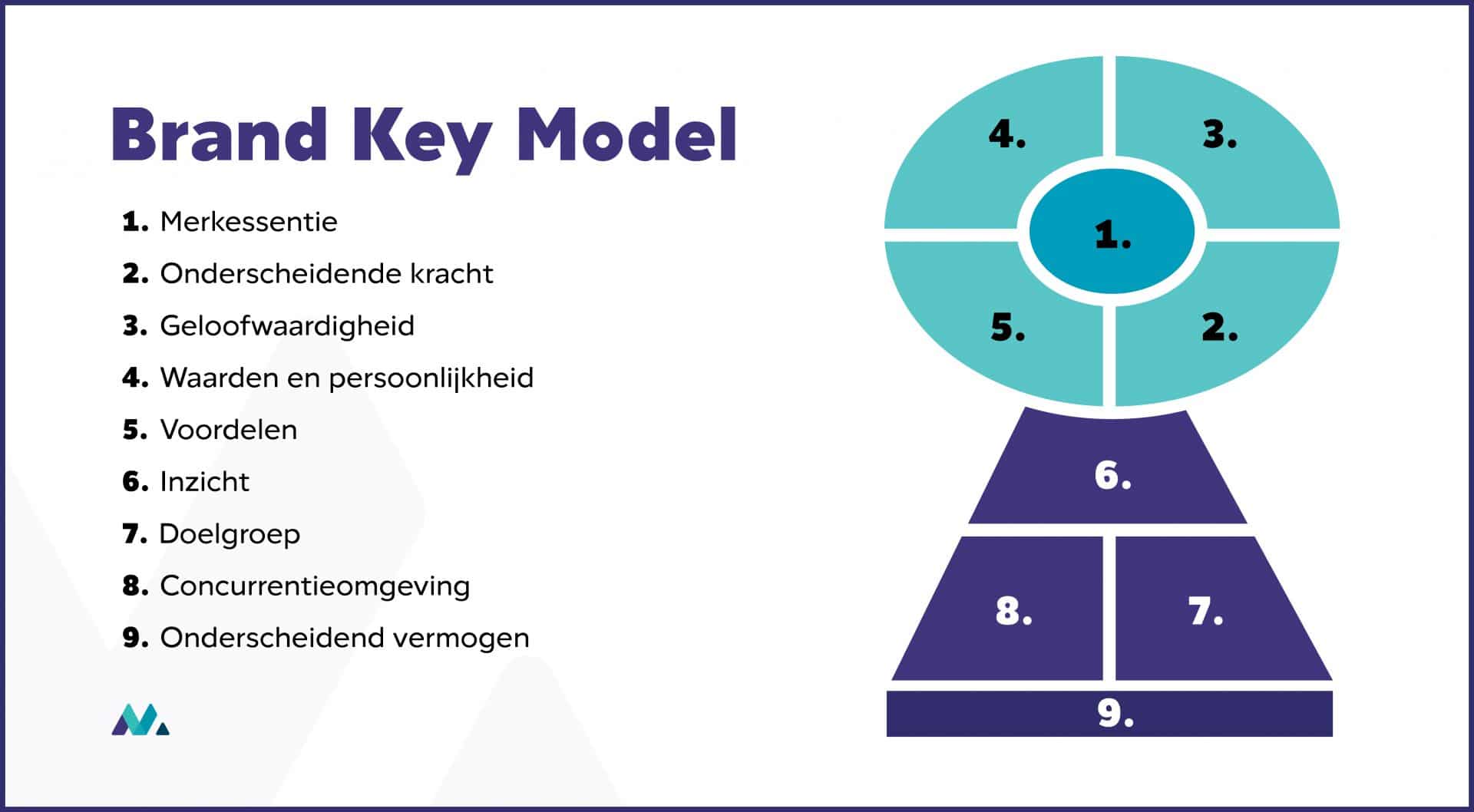
From the 5th point onwards, we believe that it’s all about the positioning, which is summarized in a concise and easy-to-understand story, the brand essence. The disadvantage of the Brand Key Model is that it doesn’t really provide practical tools for achieving a distinctive brand strategy, it only leads to its development.
Brand Strategy Agency
Merkelijkheid works – often for years – with its clients to develop a clear and distinctive brand strategy and positioning. Positioning and brand strategy form the foundation of our approach that leads to effective and efficient marketing and communication. We would be happy to tell you what this could look like for your brand.